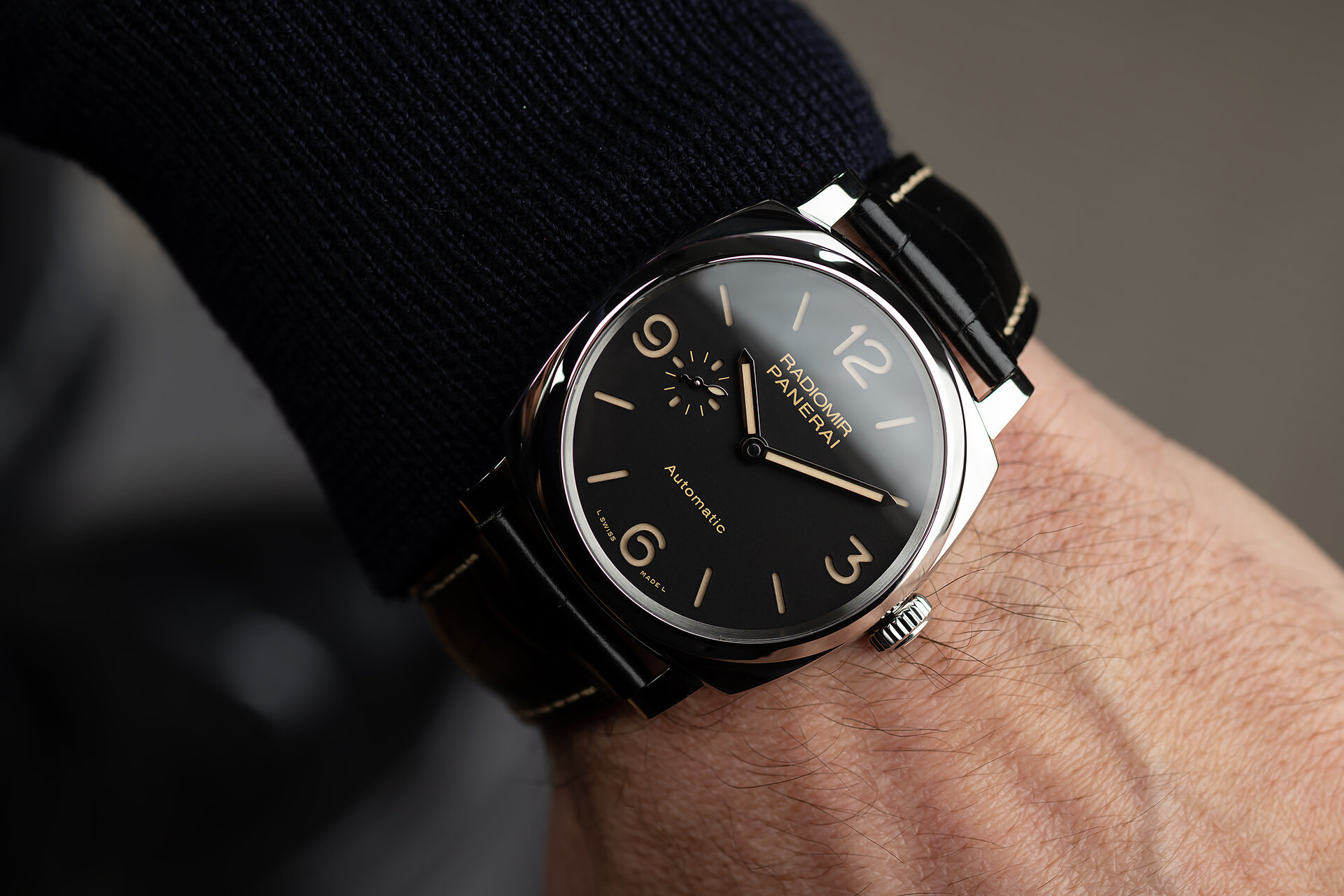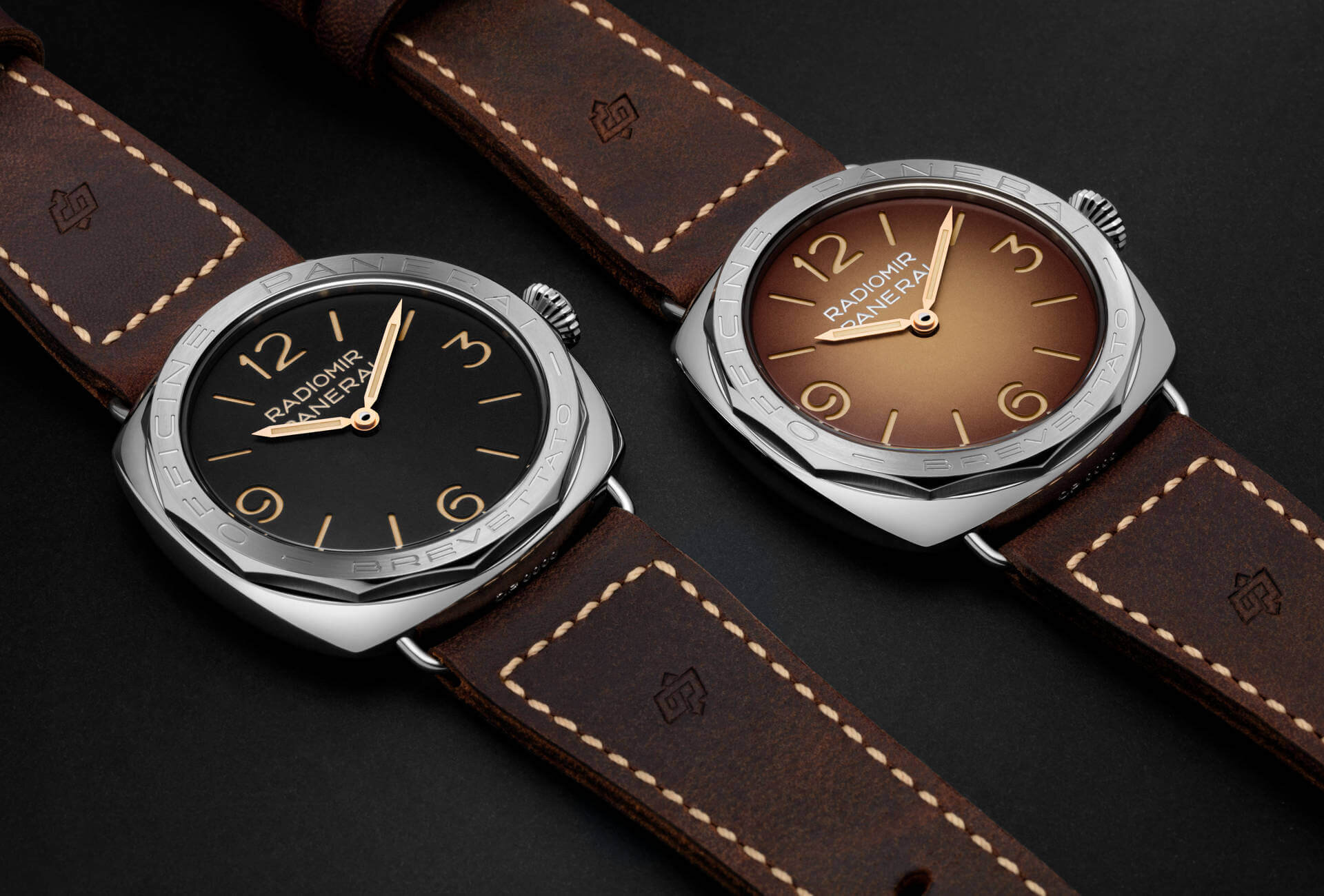Pre-owned Panerai Radiomir Buying Guide
The Panerai Radiomir is the cornerstone model of the brand – the design and innovation of this first watch defining the entire brand to this day. First released in 1938 for the Royal Italian Navy, the earliest Panerai Radiomir models displayed archetypal characteristics of brand, from the rounded Arabic numerals at the cardinal points to the luminous ‘sandwich’ dial for extra legibility in the dark. At the time, the Radiomir was amongst the world’s first dive watches. With thanks to Bobswatches for content.

Panerai Radiomir History
Infamously, the earliest models also utilised what we now know as toxic, radioactive, radium-based paint to give their hands and hour markers their bright glow. The patented substance called Radiomir, for which the watch itself got its name, was eventually banned and replaced with significantly less toxic Luminor material in 1949. Sound familiar? They created an entirely new watch around that luminous compound too.
But as far as the Panerai Radiomir goes, not even radioactive material could tarnish the reputation of this powerhouse of a watch. It stayed a favourite amongst the Italian Navy for decades and eventually, when Panerai opened its doors to the public, became a favourite among collectors and enthusiasts too. If you’re one of those people with a soft spot for this watch, this is everything you’ll want to know about buying one.
While Panerai can trace its history back to 1860, the company only began producing watches for the mass market in 1993 and didn’t re-release the Radiomir until 1998. Anything before then was military grade, and technically, now vintage (which we characterise as at least 20-25 years old).
The first Panerai Radiomir was reference 3646 and clocked in at 47mm with that signature, waterproof stainless steel cushion-shaped case with Arabic numeral, a sandwich dial with the radioactive Radiomir, wire lugs, and a sturdy leather strap. The crown was smaller but featured a serrated pattern for easy manoeuvring. The first Radiomir watches were also produced by Rolex, featuring a manually-wound calibre 618 movements.
Despite a well-documented history, the ref. 3647 is rare and elusive watch to collect. It is suspected that only 1,300 watches were produced between 1938 and 1950. During this time, you’ll see variants of the reference 3647 from A to G, each with unique aesthetics like the California dial which featured a mix of Roman and Arabic hour markers. We also saw changes like the ‘1940 case’ which was forged from a single piece of steel with reinforced lugs. This upgrade allowed it to withstand deeper underwater pressure, as requested by the Royal Navy.
Before Panerai began producing watches for the public in 1993, they created bespoke and classified watches for military forces around the world. One of the most famous is the Egiziano for the Egyptian Navy which featured a whopping 60mm case. What set this particular Panerai Radiomir apart were new elements like a marked bezel for calculating immersion time and a crown guard mechanism which we now know and associate with the Luminor.
Because these kinds of Panerai watches were created in secret and often in very limited numbers, they are amongst the most coveted timepieces on the planet. Even the earliest models between 1938 and 1949 which still featured radioactive Radiomir are sought out, and prices for these models have been known to soar over a hundred thousand dollars when they surface at auction.
Buying a Pre-owned Panerai Radiomir Today can be complicated…
In 1998, the public was introduced to the modern Panerai Radiomir – the Radiomir 210. This first edition was limited to just 60 pieces and forged out of platinum instead of the classic stainless steel. However, the rest of the design was deeply rooted in the historical design of the watch, still featuring original details like a 47mm cushion-shaped case, sandwich dial, Arabic numerals and exceptional water resistance. In the following initial years, you’ll also see some smaller case diameters of the Radiomir 210 as well as stainless steel models.
In 2004, Panerai presents the world with the Black Seal line which is a nod to the original models from the 1930’s. The PAM 183 is the very first, but today popular models include the PAM 388, the PAM 287, and the PAM 292.
The following year, Panerai started manufacturing its own movements and by 2008, the Radiomir was upgraded with the in-house automatic cal. P.9000. The P.9000, with a three day power reserve, is instantly recognisable for features like a single piece rotor which winds by moving in both directions as well as a balance wheel with adjusting screws. This set the tone for the rest of the modern collection of Panerai Radiomir watches, which would all subsequently feature in-house movements.
While this watch was a hit right off the bat, a decade in the Panerai collection made it a true icon. So by the time Panerai released the 1940 Radiomir in 2012, it was a bonafide icon. This collection, similar to the Black Seal line, was rooted in past models, this time its iconic cases of the 1940s made for the Italian Royal Navy. Like its predecessors for which it is named, this watch also features a case and lugs that are carved out of a single block of steel. And while the dial of the Radiomir 1940 is reminiscent of its vintage counterparts, what is iconic about this watch is the small seconds situated at the 9 o’clock position.
Today, we have many variations of the Panerai Radiomir, from the 1940’s model with an Art Deco dial to the vintage-inspired California dials, GMT functionality, whopping 8-day power reserves, and tinier details like small-seconds. The current range of Radiomir models grows from a managable 42mm to an oversized 48mm. Finally, the modern Panerai Radiomir can be found in not only stainless steel and titanium, but also elevated red gold and contemporary black ceramic.





